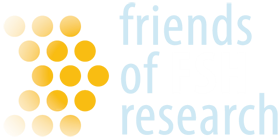Posted by Friends of FSH Research on Apr 10, 2025
Report by Dr. Tasca
See also Mapping Facioscapulohumeral muscular dystrophy through single nuclei RNA sequencing
Over the past 6 months (months 6 to 12), we successfully completed the processing of all muscle samples originally planned for the study. These included frozen muscle biopsies from individuals with facioscapulohumeral muscular dystrophy (FSHD) as well as from healthy controls.
From each sample, we isolated the nuclei of individual muscle cells and sequenced the RNA contained within them. This technique allows us to understand which genes are active in different types of cells and how this activity changes in disease.
Our initial analysis has already revealed key biological processes that are disrupted during the different stages of FSHD. We also observed differences in the number and types of cells present in the muscle tissue of FSHD patients compared to healthy individuals.
In the next phase of the project, we aim to take this analysis further. Specifically, we will investigate which cell nuclei show signs of damage caused by the DUX4 gene—known to play a central role in FSHD—and whether certain cell types are more affected than others. This will help us better understand how the disease develops at the cellular level and could inform future treatment strategies.





Connect with us on social media